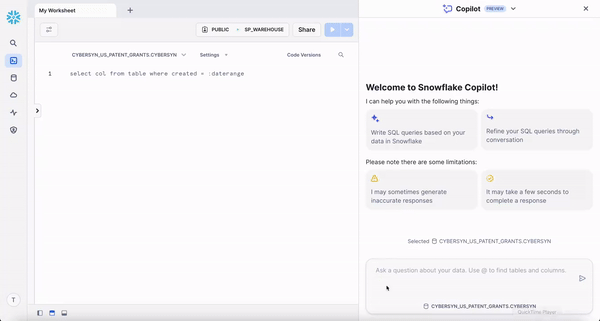Snowflake Brings SQL Copilot in Public Preview: A Generative AI-Powered SQL Assistant

Snowflake has recently brought Snowflake SQL Copilot to the public preview. Snowflake SQL Copilot is a generative AI-powered SQL assistant that aims to revolutionize the way users interact with databases. With businesses relying more and more on colossal amounts of data, the ability to extract insights quickly and efficiently is becoming crucial. Snowflake Copilot aims to simplify complex SQL queries by translating natural language questions into efficient SQL code, making it more accessible for users. The public preview of Snowflake Copilot is now available.
From Private to Public Preview
Last year, during Snowflake’s Snowday event, Snowflake SQL was introduced, and now it is available in Amazon Web Services (AWS) US regions. Copilot is a tool that utilizes the power of Snowflake Cortex and the advanced capabilities of the Mistral Large text generation model to simplify the SQL querying process. This collaboration between Snowflake and AWS aims to address the significant bottleneck for many data analysts and businesses caused by the complexities associated with SQL. Copilot offers a blend of automation and precision that was previously unattainable, thus making SQL querying more accessible and easier.
How Copilot Works
Snowflake SQL Copilot is a tool that simplifies the process of searching for data by allowing users to ask questions in simple English. The tool then translates these questions into accurate SQL commands, making it easier for everyone to access the data. This is done through a unique SQL generation model that utilizes the Mistral Large model. Snowflake Copilot is highly accurate in executing SQL commands and is better than other similar tools in the industry.
Key Features and Capabilities
Snowflake SQL Copilot is a tool that helps you generate SQL queries and optimize them intelligently to improve query efficiency. This feature is essential for ensuring that your data processes are clean and reliable. Additionally, Snowflake SQL Copilot comes with natural language data exploration and assists with Snowflake documentation, making it easier for users to navigate and utilize the Snowflake platform.
Current Limitations and Future Potential
Despite its advanced capabilities, Snowflake SQL Copilot currently has limitations such as accessing data directly from user tables or supporting cross-database queries. These constraints highlight the ongoing development and refinement needed to integrate AI into data management systems fully.
Empowering Data Analysts
The integration of AI in tools like Snowflake SQL Copilot represents a significant shift in data analysis. By reducing the time and expertise required to construct SQL queries, Snowflake SQL Copilot allows analysts and business users alike to focus more on strategic decision-making rather than the nuances of database syntax.
Key Takeaways:
- Innovative AI Integration: Snowflake SQL Copilot introduces an advanced AI-driven approach to SQL querying, making data analysis more accessible and less technically demanding.
- Enhanced User Experience: By converting natural language into SQL, Copilot simplifies data exploration and improves productivity.
- Ongoing Development: While currently limited in some areas, ongoing improvements and user feedback are set to refine and expand Snowflake Copilot’s capabilities.
- Future of Data Analysis: Snowflake’s vision extends beyond current capabilities, aiming to make natural language the primary interface for data analysis.
Asif Razzaq is the CEO of Marktechpost Media Inc.. As a visionary entrepreneur and engineer, Asif is committed to harnessing the potential of Artificial Intelligence for social good. His most recent endeavor is the launch of an Artificial Intelligence Media Platform, Marktechpost, which stands out for its in-depth coverage of machine learning and deep learning news that is both technically sound and easily understandable by a wide audience. The platform boasts of over 2 million monthly views, illustrating its popularity among audiences.




